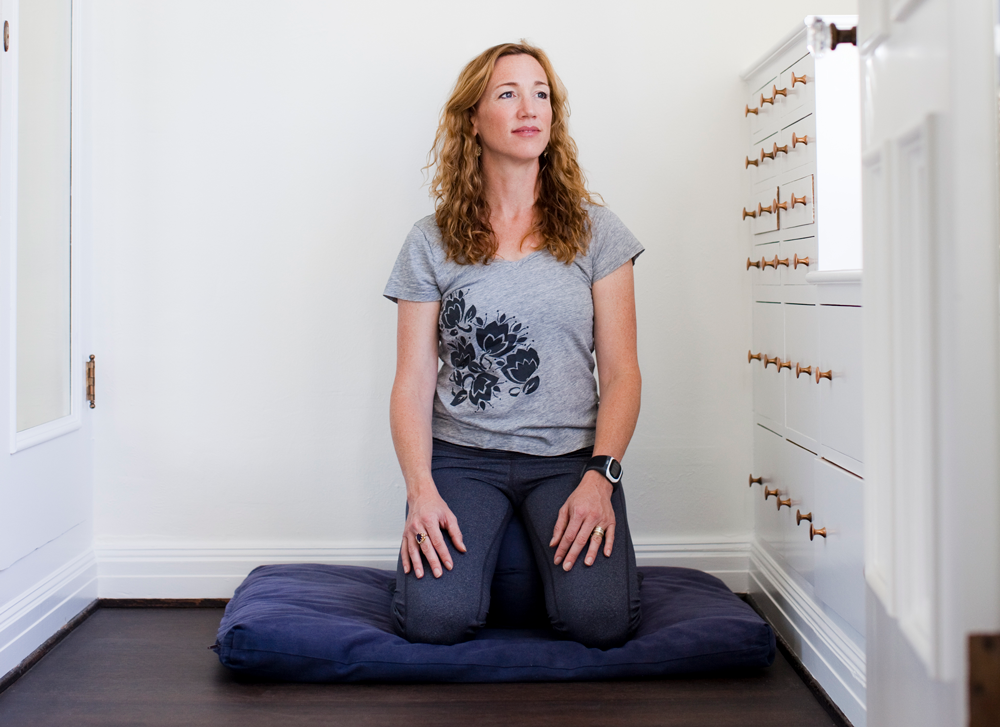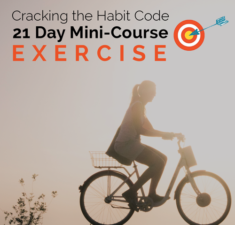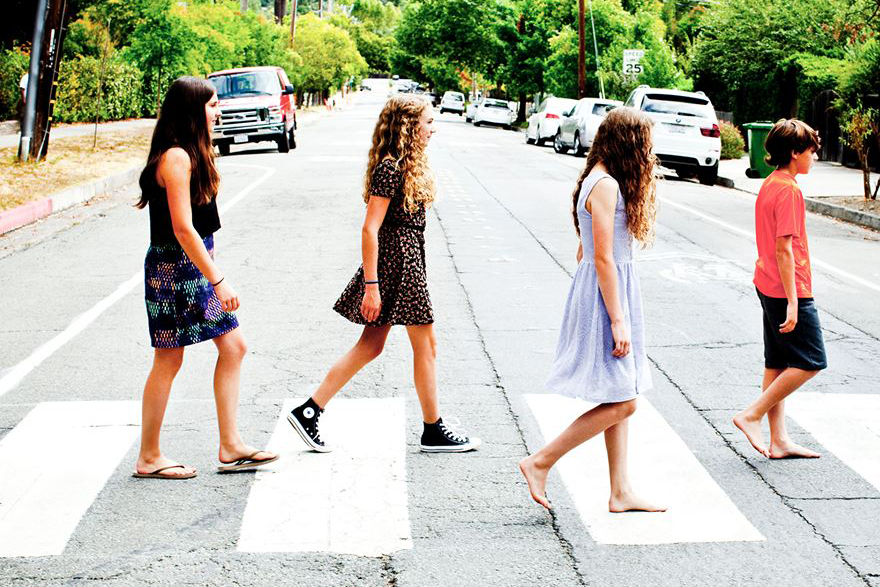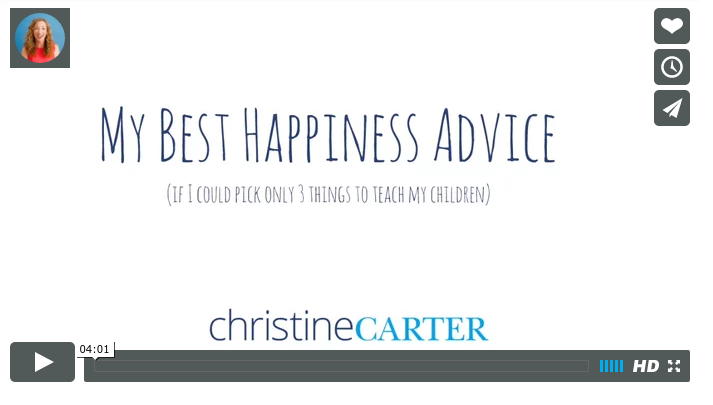When I was in high school, my advisor, Michael Mulligan, called my parents to recommend a special treatment for my anxiety: Transcendental Meditation (“TM”). I was a high-achieving perfectionist so anxious, at times, that I had stress-induced asthma.
Mr. Mulligan was not then, and is not now, a new-age spiritual seeker. He is a dyed-in-the-wool New England educator who, surprisingly, became a California cowboy. Picture a balding lacrosse preppy in khakis and a cowboy hat.
I dutifully sat with my TM teacher and tried to focus on the mantra he gave me which, truthfully, I never really understood. (Was I supposed to be repeating “eye-ing” silently to myself, or “ah-sing”?) I was too intimidated by the teacher to ask for clarification.
I was told, and I believed, that if I could just practice TM twice daily, as instructed, after six days in a row I would experience a calm so profound I would no longer be stressed or exhausted.
Boy, that sounded good.
Since high school, I’ve learned lots of other kinds of meditation; probably every kind there is. I’ve taken classes with famous Buddhists and studied Mindfulness-Based Stress Reduction. I’ve tested all the hottest meditation apps. I’m even giving a talk at a conference with His Holiness the Dalai Lama this summer.
I stay interested in meditation and I keep trying it because scores of studies have shown the benefits to be broad and profound. Meditation lowers our stress and anxiety, helps us focus, and makes us more productive. And it makes us healthier. After meditating daily for eight weeks, research subjects were 76 percent less likely than a non-meditating control group to miss work due to illness. And if they did get a cold or a flu, it lasted only five days on average, compared to eight for everyone else.
I believe in the benefits of meditation. What’s more, I believe that meditation holds the key to my spiritual and personal growth. But I haven’t been able to get myself to really practice it in my daily life.
Here’s the truth: despite all my training, and despite knowing all the the benefits, I have never one single time meditated twice daily for six days in a row, as I was originally instructed. (Actually, I have done that as a part of a long meditation retreat, but never in my regular life.)
This disconnect is driving me crazy. It is a part of my life that, until recently, I had not figured out yet.
Why? This is my new insight: I am, on some deep level, afraid. Whenever we are faced with a behavior that defies both logic and desire (e.g., I both know why it is in my best interest to meditate, and I want a regular practice), the hard truth is that usually fear is the roadblock.
It’s not that I actually feel actively afraid of meditating, and you might not feel particularly afraid of whatever you are not-doing, either. A fear is a perceived risk or danger — real or not. What’s risky or dangerous about meditation, after all?
It turns out, more than I originally thought. I’m a recovering perfectionist. Just the thought of not working, not accomplishing, not striving feels uncomfortable. And when I really dig deep, I can see that there’s more: I’m a smidge terrified of that void that, for some, is the whole point of meditation. That Stillness. Nothingness.
I might understand intellectually the many benefits of meditation, but in the moment it feels better to me to check my email, to use all the time allotted for meditation skimming news about the latest Trump disaster, or to just plain start working first thing each morning. These things aren’t necessarily the best use of my time, but they are so much easier than giving myself over to the stillness that would be so good for my mental and physical health (and, according to the scientific research, my work, and, according to the enlightened masters, my spiritual growth).
Here’s what I’m afraid of: What if I don’t get enough done today? This might sound shallow, but it’s the tiny tip of a glacial (and fundamental) human fear: What if I am not good enough? What if I am simply not enough?
I can always convince myself (logically) that I am enough; there is a mountain of evidence of this in my achievements. But deep down, as 30 years of avoidance has shown me, there is something more here. Somehow, my achievements are not enough for me to feel inner peace, they are never enough. Hospice caregiver Stephen Levine writes about how many people, sadly, feel this on their deathbed:
“[The dying often] do not recognize that their strong desire for some trophy of their worthiness is a trophy of their feelings of unworthiness born of a deeper disappointment. Having not discovered their own great truth…they have settled for success. Whether their dream was stardom or starshine, their book published, their true love found, or their temper defeated, they believed that their life was incomplete.” [emphasis mine]
Ah. Hmm. Meditation asks me to let go of all tributes to my worthiness, to my ego-based identity. This is more or less the stated goal of every meditation practice I’ve ever learned: To let go of those external and often status-based things that we think make us feel worthy — because they amplify our feelings of unworthiness. Meditation asks me to cease — for 20 minutes, twice each day — being a mom, wife, lover, friend, sociologist, author, speaker, coach, teacher. To give up success, in favor of peace. That’s fucking frightening to people like me.
I have struggled to meditate regularly for the last three decades because my belief that I should meditate is intellectual, cognitive. But my avoidance of it — my fear of not being good enough — is emotional.
And emotions always trump logic. I know that I am not alone here. Many people don’t do the very things they know would make them happier and healthier.
So instead of telling myself a thousand more reasons why I should meditate, I’m going to work with my fear on an emotional level. I know how to tame a fear. Here’s how, if you’d like to follow along with a fear of your own:
1. Name it to tame it. Instead of denying that you’re afraid, look fear in the face. Give it a name. For me: Fear of not being or doing enough.
2. Comfort yourself. Start by exhaling deeply, which is the key to calming the nervous system.
Now, think about what will make you feel safer. What can you do to soothe yourself right now? (I know, a glass of chardonnay sounds good. That’s not the type of comfort we are talking about, friend.) I like to recite to myself this part of Mary Oliver’s poem “Wild Geese” to myself:
You do not have to be good.
You do not have to walk on your knees
For a hundred miles through the desert, repenting.
You only have to let the soft animal of your body
Love what it loves.
3. Take a baby step. Break the behavior you are avoiding doing into an action step so small that it no longer feels worth resisting. I’m going to go meditate for three minutes. I know I have three minutes, and that doesn’t feel so scary, after all.
That’s it! That’s what I’m doing — and it’s getting results: Meditation has become more a part of my daily life.
Meditation allows me to practice putting down the heavy trophies that proclaim that I am “enough.” For a few minutes each day, I can leave the world of success and status and go home to who I really am: Love. Acceptance. Connection.
Pico Iyer writes in The Art of Stillness that “getting caught up in the [material] world and expecting to find happiness there [makes] about as much sense as reaching into a fire and hoping not to get burned.”
I’ve come to see that there is no such thing as a bad meditator; there is just a person who either turns to her internal experience to see what is there, or someone who does not. For me, I’ve finally seen that turning inward is not as scary as I thought it was, and it’s a sure way not to get burned.











